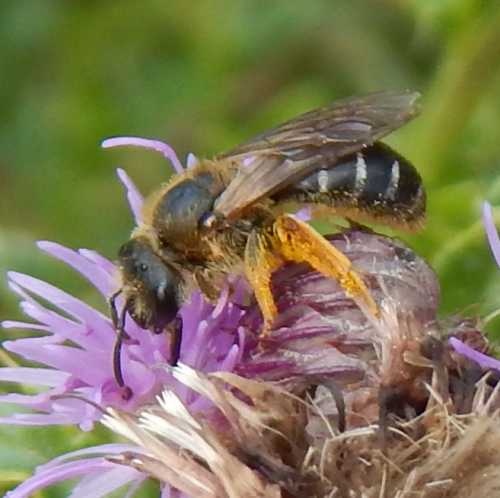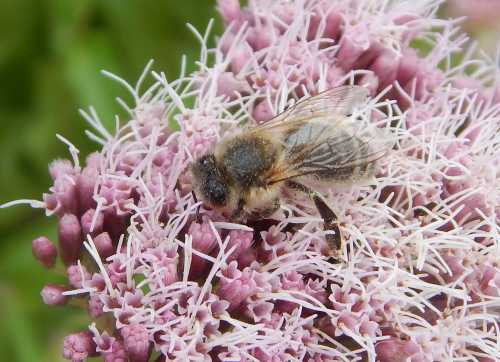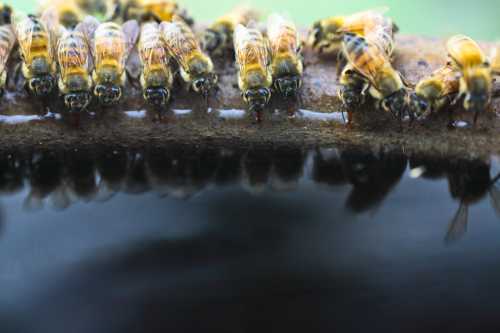Have You Seen Bees Carrying Pollen?
Updated: February 2025
Bee species can vary somewhat in the way they gather and transport pollen.
Here are a few factors to know and look out for, next time you stop to watch bees foraging on flowers.
Pollen Gathering - A Few Points To Note
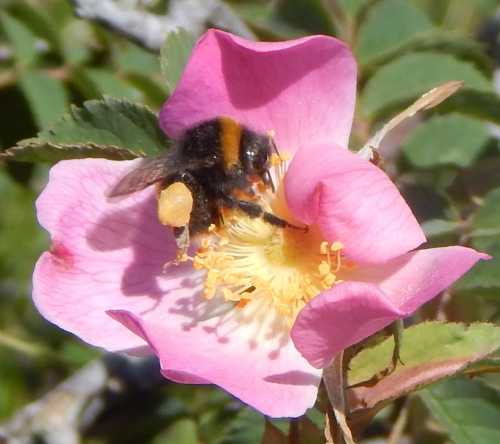 This bumble bee's pollen baskets are full, round and visible on the hind legs.
This bumble bee's pollen baskets are full, round and visible on the hind legs.1. A bee carrying pollen is always female, but not all female bees carry pollen!
In most bee species, the female bees gather pollen, which they transport back to the nest or hive to provide food for developing young.
However, there are parasitic bee species and cuckoos which do not collect pollen themselves. Instead, the parasite or cuckoo female lays an egg (or eggs, depending on species) in the nest of a 'target host' species, with the intention that her offspring will benefit from the pollen intended for the host's own young.
2. Pollen can be collected and carried on different parts of a bee's body
With all species, pollen is collected on hairs that are specially adapted in some way, so that the bee can carry pollen from flower to flower during the foraging trip, and then finally back to the nest (or hive if managed honey bees).
Depending on species, pollen is carried predominantly on the hind legs or the underside of the abdomen. See: How Do Bees Collect Pollen for further information.
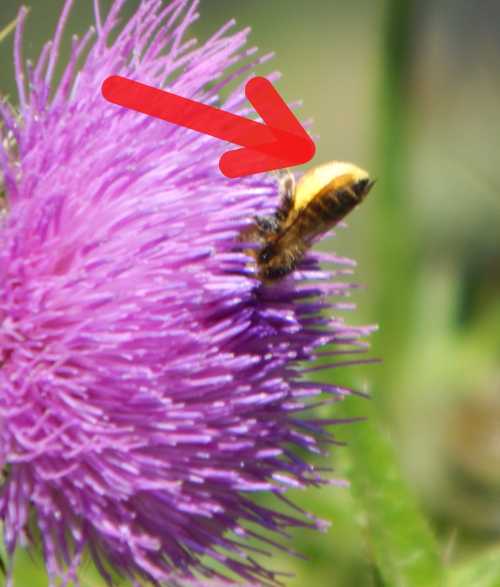 On this photograph, you can clearly see the pollen on the underside of the abdomen of this leafcutter bee (a member of the Megachilidae family).
On this photograph, you can clearly see the pollen on the underside of the abdomen of this leafcutter bee (a member of the Megachilidae family).
3. Pollen provides vital food
Pollen is important for bees, as it provides a nutritious food source (especially protein) for developing offspring.
4. Pollen is variable in shade!
You may see bees with legs laden with dark orange pollen, creamy white to yellow pollen. This is because there will be variations in shade, depending on the flower species from which the pollen was collected.
5. Some bees have a pollen preference
Some species are pretty unfussy, and will forage for pollen from multiple different types of flowering plant. Other species will focus on a restricted flower group, whilst other will limit themselves to just one or two flower species.
Do all flowers provide pollen for bees?
Flowers may provide both nectar and pollen, or they may offer a rich source of pollen, and little nectar, or vice versa.
Examples of flowers which provide large amounts of pollen for bees include Leucanthemum vulgare (ox-eye daisy) and Cosmos bipinnatus (Cosmos).
If you found this page helpful or interesting, I'd really be grateful if you would share it with others - if not this page, perhaps another, such as Gardening For Bees.
Thank you so much :) .
